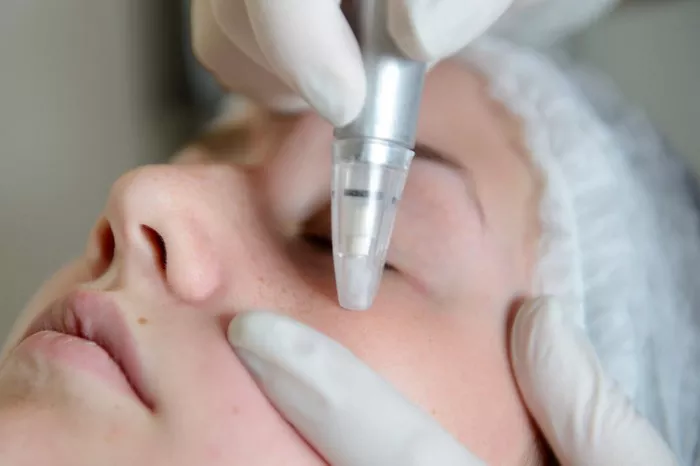Acne scars can be a lasting reminder of past breakouts, impacting both physical appearance and self-confidence. Fortunately, there are various treatments available to help improve the appearance of acne scars, including microdermabrasion and microneedling. Both procedures are popular choices for addressing this concern, but they work through different mechanisms and offer varying benefits. In this article, we will explore the key differences between microdermabrasion and microneedling for treating acne scars to help you make an informed decision about which option may be better suited to your needs.
Understanding Acne Scars
Before delving into the treatments, it’s essential to understand the different types of acne scars:
Atrophic Scars: These are depressed scars that result from a loss of tissue. The two most common types of atrophic scars are icepick and boxcar scars.
Hypertrophic and Keloid Scars: Raised scars that result from excess collagen production during the healing process. They are more common in individuals with a genetic predisposition.
Microdermabrasion for Acne Scars
How it works: Microdermabrasion is a non-invasive exfoliation technique that uses a machine to remove the top layer of dead skin cells. The process typically involves the use of a wand with fine crystals or a diamond-tipped wand that is gently passed over the skin. The device simultaneously exfoliates and suctions away the exfoliated skin cells.
Benefits for Acne Scars:
Mild to Moderate Scars: Microdermabrasion is most effective for mild to moderate acne scars, particularly those that are shallow and have less variation in texture.
Little to No Downtime: It is often referred to as a “lunchtime” procedure because it typically requires no downtime. Patients can resume their regular activities immediately after treatment.
Enhanced Product Absorption: Microdermabrasion can improve the penetration of skincare products, allowing for better absorption of serums and creams that may help further improve skin texture.
Limitations:
Not Effective for Deep Scars: Microdermabrasion is less effective for deep acne scars, such as icepick or boxcar scars, which extend deeper into the skin.
Multiple Sessions Required: Achieving significant results usually requires a series of treatments, typically spaced a few weeks apart.
Microneedling for Acne Scars
How it works: Microneedling, also known as collagen induction therapy, involves the use of a device with tiny, fine needles that create controlled micro-injuries in the skin. These micro-injuries stimulate the body’s natural wound-healing response, leading to increased collagen and elastin production.
Benefits for Acne Scars:
Effective for Various Scars: Microneedling is effective for a range of acne scars, including atrophic scars (such as boxcar and rolling scars) and even hypertrophic or keloid scars.
Collagen Production: The controlled injury triggers collagen remodeling, which can help plump and smooth out the skin, reducing the appearance of scars.
Versatility: Microneedling can be customized to target specific scar types and depths by adjusting the needle length and intensity.
Improvement Over Time: Results continue to improve over several months as collagen production increases.
Limitations:
Downtime: Microneedling typically requires a short period of downtime, with redness and mild swelling lasting a few days post-treatment. Patients should plan accordingly.
Multiple Sessions Required: Like microdermabrasion, microneedling often requires a series of treatments for optimal results.
Which Is Better for Acne Scars: Microdermabrasion or Microneedling?
The choice between microdermabrasion and microneedling for acne scars depends on the type and severity of the scars, as well as personal preferences:
Microdermabrasion is better suited for mild to moderate acne scars with less depth and variation in texture. It is an excellent option for those seeking minimal downtime and who are willing to undergo multiple sessions.
Microneedling is a versatile treatment effective for a wide range of acne scars, including deeper and more severe ones. It offers the advantage of long-term collagen production and is suitable for individuals willing to tolerate a short downtime.
In some cases, a combination approach may be recommended, with microdermabrasion used to improve the surface texture of the skin followed by microneedling for deeper scar remodeling.
Conclusion
Both microdermabrasion and microneedling are valuable treatments for improving the appearance of acne scars. The choice between the two depends on your specific scar type, desired results, tolerance for downtime, and willingness to undergo multiple sessions. Consulting with a dermatologist or skincare professional is essential to determine the most appropriate treatment plan tailored to your unique needs and goals.

